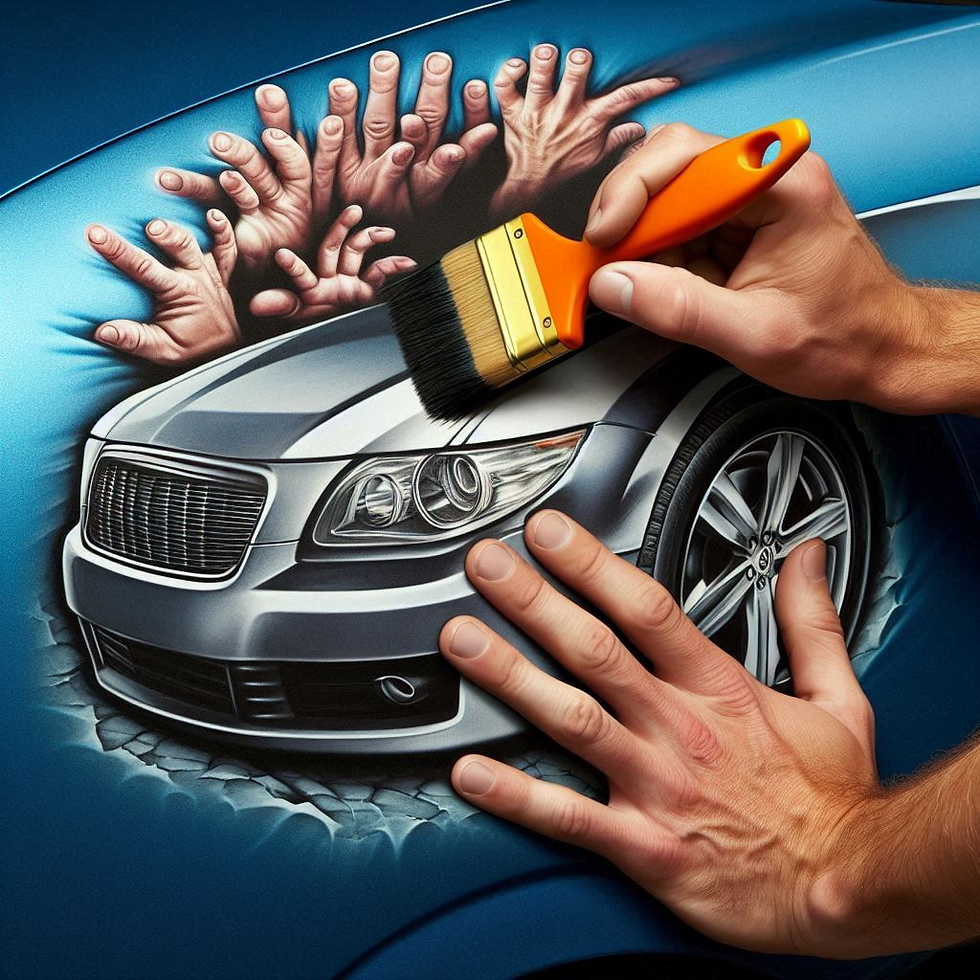How To Remove Scratches From Your Car: A Comprehensive Guide
- UK Business Insights
- Aug 16, 2024
- 3 min read
Your car’s exterior takes a beating from everyday use, and scratches are a common issue that many drivers face. Whether it’s a stray shopping trolley, a rogue branch, or just the general wear and tear, scratches can diminish the appearance of your vehicle. Thankfully, removing scratches is often a manageable task, and with the right techniques and tools, you can restore your car to its former glory. In this guide, we'll explore effective methods for scratch repairs, along with tips on body repairs, paint correction, and scuff repairs.
Understanding Car Scratches
Before diving into the removal process, it’s essential to understand the different types of scratches your car might have:
Clear Coat Scratches: These are superficial and affect only the clear coat layer of your car’s paint. They are the easiest to fix and typically don’t require professional intervention.
Base Coat Scratches: These penetrate through the clear coat and into the base colour layer. They are more noticeable and may require more extensive repair.
Primer Scratches: These deep scratches reach the primer layer and, in some cases, the metal beneath. These are the most severe and usually need professional body repairs.
DIY Scratch Removal Techniques
For minor scratches, you can often handle the repairs yourself. Here’s a step-by-step guide:
Clean the Area: Begin by thoroughly washing the scratched area with soap and water. This removes any dirt or debris that could cause further damage during the body repair process. Dry the area with a clean cloth.
Assess the Scratch: Determine the depth of the scratch. For clear coat scratches, you can proceed with a scratch removal product. For deeper scratches, you might need to use a touch-up paint kit.
Use a Scratch Remover: For light scratches, apply a scratch removal product. These products often come in the form of creams or liquids and are designed to polish the surface of the scratch, blending it with the surrounding paint. Apply a small amount to a soft cloth and rub it gently into the scratch in a circular motion.
Apply Touch-Up Paint: If the scratch has penetrated the base coat, use touch-up paint that matches your car’s colour. Apply the paint sparingly with a fine brush or applicator, ensuring that it fills the scratch evenly. Allow it to dry according to the manufacturer’s instructions.
Polish the Area: After the touch-up paint has dried, polish the area to restore its shine. Use a car polish that is suitable for your vehicle’s paint. Apply it with a clean cloth and buff the area until it blends seamlessly with the surrounding paint.
Apply Wax: To protect the repaired area, apply a layer of car wax. This not only enhances the shine but also provides a protective barrier against future scratches and environmental damage.
Professional Body Repairs and Paint Correction
For more severe scratches, or if you prefer a professional touch, body repairs and paint correction are the best options:
Body Repairs: Professional body repair shops have the expertise and tools to handle deep scratches that go beyond the clear coat and base coat. They will typically sand down the damaged area, apply primer, paint, and finish with a clear coat to ensure a seamless repair.
Paint Correction: This is a more comprehensive process that involves polishing the entire car to remove scratches, swirls, and other imperfections from the paint. Paint correction can significantly improve the overall appearance of your car, especially if it has multiple scratches and scuffs. Professional detailers use advanced techniques and equipment to achieve a high-quality finish.
Scuff Repairs: An Additional Tip
Scuffs, often caused by brushing against objects or minor collisions, can also be addressed alongside scratches. Here’s how to handle them:
Clean the Area: As with scratches, start by cleaning the scuffed area thoroughly.
Use a Scuff Remover: Apply a scuff remover product designed to address these marks. Follow the instructions carefully and use a soft cloth to rub the product into the scuffed area.
Polish and Wax: Finish by polishing the area and applying wax to protect the repair.
When to Seek Professional Help
While many minor scratches and scuffs can be managed with DIY methods, deeper or more complex damage is best left to professionals. They have access to high-quality materials and specialised equipment, ensuring a more durable and aesthetically pleasing result.
Conclusion
Removing scratches from your car can range from a simple DIY task to a more involved process requiring professional assistance. Understanding the type of scratch and the appropriate repair method is crucial for achieving the best results. For minor scratches, scratch removers and touch-up paints can be effective, while deeper damage may necessitate body repairs and paint correction. By following these guidelines, you can keep your car looking its best and maintain its value.


Comments